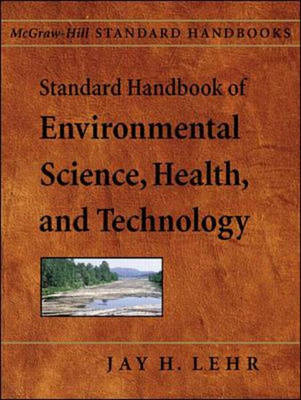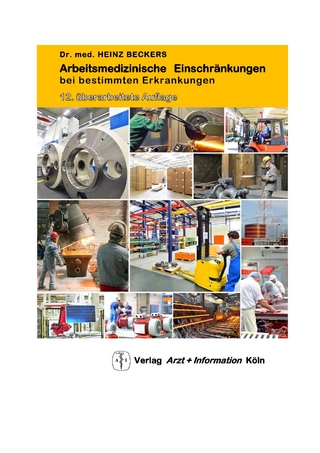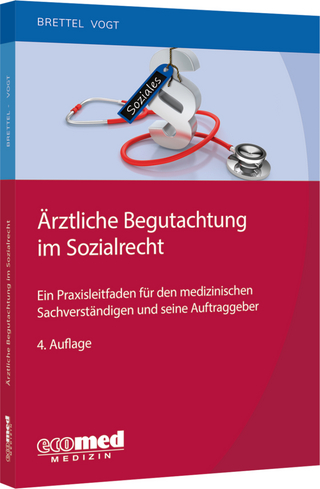
Standard Handbook of Environmental Science, Health, and Technology
McGraw-Hill Publishing Co. (Verlag)
978-0-07-038309-8 (ISBN)
- Titel ist leider vergriffen;
keine Neuauflage - Artikel merken
The most comprehensive single volume ever assembled for the environmental professional - a one-stop, all-under-one-roof overview of environmental engineering subject areas, and a task-simplifying toolkit designed to simplify day-to-day decisions. It covers the varied topics of interest for today's environmental scientist: mathematical modeling, statistics, plant pathology, as well as engineering problem-solving, management decision-making, and public communication. It is a perfect resource for biologists, hydrologists, geologists, engineers, chemists, and toxicologists. It is packed with numerous tables, charts, illustrations, sampling methods, monitoring methods, testing methods, control techniques, equipment maintenance procedures, and calculation methods. It includes lesson-filled editorial commentary by many of the nearly 100 environmental scientists who have contributed to this book.
Jay H. Lehr, Ph.D., is the country's most frequently quoted authority on groundwater hydrology and hydrogeology. Additionally, he is a prolific author and the Senior Scientist at Environmental Education Enterprises (E3), one of the nation's largest environmental short-course providers. Lehr served on the faculty of the University of Arizona and The Ohio State University, and was editor of the prestigious journal Ground Water, for 25 years. He played a significant role in the development of many of the United States' primary environmental laws.
Part I: The Interaction of Basic Scientific Disciplines on Contaminant Fate and Transport in the Environment. Chapter 1: Chemistry. Aquatic Chemistry Environmental Chemistry of the Atmosphere Soil Environmental Chemistry Environmental Biochemistry Toxicological Chemistry Geochemistry Chapter 2: Classes of Chemicals. Hydrocarbons Pesticides and Polychlorinated Biphenyls Chlorinated Solvents Radionuclides Chapter 3: Geology. Geologic Principles Chapter 4: Hydrology. The Hydrologic Cycle Precipitation and Runoff Streamflow and Flood Control Groundwater Flow Well Hydraulics Real-Time Soil Water Dynamics Fate and Transport Modeling - Effectively Using Isotopes of Wtaer to SOlve Practical Hydrogeological Problems Fate and Transport in Fractured Rock Chapter 5: Physical Transport. Air Pollutants and Fugitive Dust Mixing and Transport of Pollutants in Surface Water Chapter 6: Biology. Biology Chapter 7: Contaminant Effects. Toxicity Testing Ecological Risk Assessment Ecological Effects of Toxicants Air Pollutant Sources and Effects Chapter 8: Analysis and Modeling. Geochemical Modeling Groundwater Flow Modeling Solute Transport Modeling Fate and Transport in Rivers, Lakes, and Estuaries Geostatistics Pharmacokinetic/Dynamic Modeling Appendix A: Selected Computer Codes, Software Description and Availability Appendix B: Software for Compartmental Models Appendix C: Computer Codes Geographic Information Systems Computing Optimal Pumping Strategies for Groundwater Contaminant Plume Remediation Appendix A: Formation of Constraint Equations for Repsonse Matrix Models Appendix B: Unique Features of REMAX Economics Part II: Site Based Environmental Science, Health and Technology. Chapter 9: Pollution Prevention Concepts and Policies. Pollution Prevention Science and Technology Plant Operations Urban Stormwater Management and Nonpoint Source Pollution Control Chapter 10: Environmental Regulations. Basics of Environmental Law Chapter 11: Assessment Sampling and Monitoring. Site Evaluation, Auditing, and Assessment Applications of Global Positioning Systems in the Environmental Sciences Indoor Air: Sick and Healthy Buildings Stream Sampling Sediment Collection Monitoring Well Construction and Sampling Techniques Aquifer Testing Soil Vapor Principles Applications and Interpretation of Soil Vapor Data to Volatile Organic Compound Contamination Neutron Probes Direct Sensing of Soils and Groundwater Direct Push Technology Sampling Methods Borehole Geophysics Surface Geophysical Methods for Site Characterization Chapter 12: Toxicology and Risk. Decisions in the Face of Uncertainty Variability and Uncertainty Selecting Indicator and Surrogate Compounds Selecting Indicator Pathways The Dose Makes the Poison: Some Common Misconceptions Low Dose Response-Hormesis Microorganisms, Molecules, and Environmental Risk Assessment: Assumptions and Outcomes Chapter 13: Control Technologies. Hazardous Waste Handling and Disposal Hazardous Waste Dumping as it Relates to a Japanese Risk Management System Medical Waste Incineration Control Technologies: Particulate Controls Control Technologies: Gas Controls Fundamentals of Odor Management Water Supply Treatment A: Design Flow and Loads B: Screens C: Chemical Reactors Water Supply Treatment A: Coagulation, Flocculation, Mixing, and Mixers B: Sedimentation and Filtration Chapter 14: Remediation Technologies. Monitored Natural Attenuation (MNA) Passive In Situ Remediation Technologies Phytoremediation: A Promising Path to the Elimination of Heavy Metals and Radionuclides in Groudwater and Soil Bioremediation of Hazardous Wastes: History and Applications Bioremediation Pump-and-Treat Technologies Electrokinetic Treatment of Hazardous Wastes Surfactant-Enhanced Aquifer Remediation Remediation of Metals-Contaminated Soils and Groundwater DNAPL Investigation and Remediation Vertical Passive Groundwater Barrier Systems Aquifer Restoration via In Situ Air Sparging Chapter 15: Ubiquitous Environmental Contaminants. Endocrine Disruptors Radon in Air Radon and Radon Daughters Chlorofluorocarbons Methyl Bromide Subsurface Petroleum Spills Ionizing Radiation Mortality in Male and Female Capacitor Workers Exposed to Polychlorinated Biphenyls Part III: Place Based Environmental Science, Health and Technology. Chapter 16: Managing Place Scale Problems. Decision Making Ecosystem Management Brownfields Guidelines for Emergency Response Environmental Communication Ecological Engineering Chapter 17: System Level Risk Assessment. Probabilistic Safety in Government and Industry Risk Assessment in the Broader Context Risk Management in View of Economic Aspects Weighing the Risks of Remediation Chapter 18: Environmental Science in the Legal System. Environmental Science, Toxic Torts, and the Legal System Chapter 19: Sensitive Environmental Systems. Karst Systems Alpine Lakes Wetlands Plants and Population: We Have the Time. Do They Have the Will? Chapter 20: Sensitive Environmental Problems. Agricultural Runoff Test of the Validity of the Linear-No Threshold Theory of Radiation Carcinogenesis with a Survey of Radon Levels in U.S. Homes Acid Rain-The Whole Story to Date The Ozone Layer Greenhouse Warming (GHW) Controversies Surrounding the Endangered Species Chapter 21: Misconceptions About Environmental Pollution. Misconceptions about Pollution, Pesticides, and the Prevention of Cancer Science, Pesticides, and Politics Simple Truths of Environmental Facts and Fallacies Chapter 22: Global Perspectives and Trends. The Road from Rio to Kyoto: How Climate Science Was Distorted to Support Ideological Objectives Natural Forces versus Anthropogenic Change Controlling Hazardous Pollutants in a Developing Context: The Case of Arsenic in Chile Emerging Environmental Issues from the Perspective of Industry
| Erscheint lt. Verlag | 17.8.2000 |
|---|---|
| Zusatzinfo | 592 Illustrations |
| Verlagsort | London |
| Sprache | englisch |
| Maße | 193 x 236 mm |
| Gewicht | 2594 g |
| Themenwelt | Medizin / Pharmazie ► Medizinische Fachgebiete ► Arbeits- / Sozial- / Umweltmedizin |
| Technik ► Umwelttechnik / Biotechnologie | |
| ISBN-10 | 0-07-038309-X / 007038309X |
| ISBN-13 | 978-0-07-038309-8 / 9780070383098 |
| Zustand | Neuware |
| Haben Sie eine Frage zum Produkt? |
aus dem Bereich


